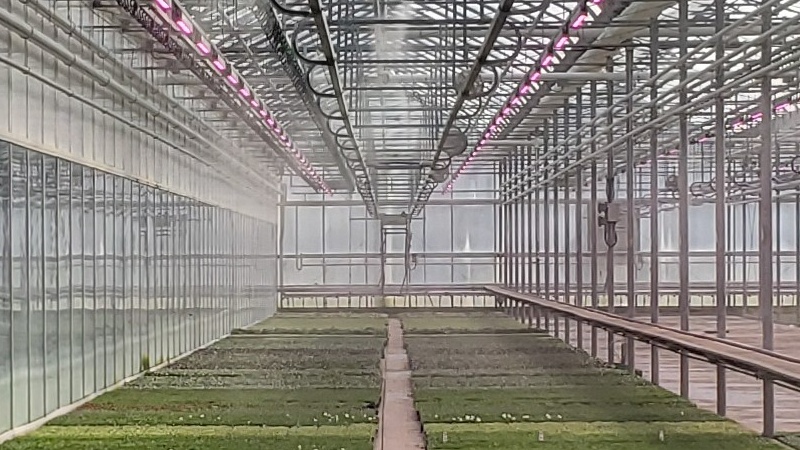
Technically Speaking: Far-red Light in Greenhouse and Indoor Farming
Far-red is a waveband of light that is marginally visible to us but has profound effects on plant growth and development. Far-red light is often described as radiation with a wavelength between 700 and 800 nanometers (nm). However, the waveband between 700 and 750 nm is of most interest because of its potential to increase plant growth. As described below, far-red increases both plant elongation and biomass accumulation.
By definition, photosynthetically active radiation (PAR) is light with wavelengths from 400 to 700 nm. Thus, far-red is outside of the PAR waveband. One way to quantify far-red is by its percentage relative to PAR plus far-red (i.e., 400 to 800 nm). About 25% of sunlight within the 400 to 800 nm waveband is as far-red. Incandescent lamps emit a lot of far-red (about 52%), but those are increasingly obsolete. Other conventional electric lighting fixtures emit relatively little far-red light, such as high-pressure sodium (6%), metal halide (8%) and cool-white fluorescent (2%).
Light-emitting diode (LED) fixtures usually emit very little far-red light. Most horticultural LED fixtures emit less than 2% as far-red and many (especially ones with a purplish spectrum) emit less than 1% of light as far-red. The major exception is some LED products that have been designed specifically to regulate flowering. These are all products that screw into a socket and emit a low-light intensity. Examples include the deep red/white/far-red GreenPower LED flowering lamp from Philips, the Arize Greenhouse Pro LED lamp from GE Current and the Pure Flowering 200 Lamp from TotalGrow.
Far-red increases extension growth. In contrast to PAR, leaves do not absorb far-red light well. A majority of far-red light that strikes a leaf is reflected back or transmits through the leaf. However, this light then becomes available to other leaves and plants nearby. Generally, increases in far-red light proportionately increases extension growth. In particular, far-red light increases internode elongation (the distance between each leaf on the stem) and leaf length. It can also suppress branching, leading to more pronounced growth on the primary stem. Many growers know that plants “stretch” under incandescent lamps, and that’s because of their rich emission of far-red.
Far-red increases photosynthesis. A lot of research has been performed in the past five years on the effects of far-red light on plant growth. Far-red light indirectly increases plant growth by increasing leaf size, enabling plants to capture more available light than plants with smaller leaves. Studies have also shown direct increases in the rate of photosynthesis, particularly with wavelengths between 700 and 730 nm. In fact, many horticultural scientists are suggesting that the definition of PAR be extended to include far-red light. Stay tuned for more information on this topic.
Far-red sometimes promotes flowering. Studies performed in the 1950s and 1960s showed that, in some cases, including far-red light in day-extension or night-interruption lighting can accelerate flowering of some species. The effects of far-red light on flowering have become clearer with the use of far-red LEDs in controlled lighting experiments. In general:
• Across a wide range of species and growing conditions, lighting fixtures used at night that emit both red and far-red light are the most effective at promoting flowering of long-day plants.
• Far-red light alone is not effective at regulating flowering of short-day or long-day plants.
• Adding far-red to low-intensity red light at night has no significant effect on inhibiting flowering of short-day plants.
• The promotive effect of far-red light on flowering of long-day plants decreases as the daily light integral (DLI) increases. Once the average DLI is at least 12 mol∙m–2∙d–1, there is usually little to no benefit of far-red in a low-intensity light spectrum.
• Far-red has no consistent effect on flowering of day-neutral plants.
There are compelling reasons to have some far-red in a light spectrum, especially when crops are grown indoors, without sunlight. Far-red light typically increases growth both directly and indirectly and, in some cases, accelerates flowering. However, crops grown with far-red typically have larger leaves and longer stems, making plants less compact. Whether a taller crop is desirable or not can depend on the species, container size and market.


 Video Library
Video Library 




















